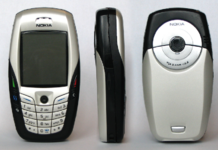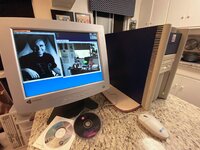BeOS still remains as one of my favorite GUIs. I wonder if macOS would have been as popular as it is now had they gone with Be instead of NeXT.
The end of 1996 was scary for Mac fans, like myself, because we could see that Apple was in major trouble, even though it had a surprisingly high (but misleading) market share. PowerPC was just getting into its stride as the troubles with the x200's 603 CPU were history; the PB1400 was just released; 604 machines were out and 603e CPUs were ramping up the MHz.
The Mac community were excited about Be and largely indifferent to Steve Jobs and NeXT. And this is mostly, because of the perception of Jobs being very contentious, but also because NeXT hardware meant big, expensive & underpowered 68K workstations or Intel-based NeXT Step. Neither of these represented the Mac culture, so we weren't thinking about them. However, BeOS represented pretty much everything we wanted from Pink and Copeland: a relatively efficient, multi-tasking, multi-processor, object-oriented, multi-media OS. It was incredibly exciting. Also it ran on PowerPC and had basically already been ported to Macs.
So, the advantages with jumping onto BeOS would have been a very rapid transition to a Mac-based GUI BeOS (with some Be influences). There would have been the equivalent of CarbonLib (maybe called BeLib or ToolboxLib or something) or maybe just a Virtual Machine to run Mac OS within BeOS and then the new stuff directly on top of BeOS. Or, even just dual booting between Mac OS and BeOS. So, I imagine that would have given us the equivalent of Jaguar Mac OS X 10.2, by late 1998 or early 1999 rather than mid-2002, it would have gained us about 3 years.
Gassée was a popular manager as far as I understood. He had charisma and drive as well as an understanding of marketing. He didn't have the same left-field creativity of Jobs, but he wan't as abrasive. Gassée likely would have replaced Amelio as CEO much more quickly than Jobs did, probably by early 1997. However, he wouldn't have been as commanding as Jobs, nor as capable of paring down the product line; nor eliminating clones (which were starving Apple of profits for R&D).
That's what makes deciding between a BeOS alternate history difficult. If I was in Gassée's position, I would have kept the clones (Be essentially was making machines not too far from Mac clones), but changed the terms so that Apple's R&D could have been maintained: differentiate clones by features (or bundles) rather than price. For example, Apple could have gone for the consumer market (with lots of bundled software) and the high-end market (speed & graphics); whereas clones could target specific markets (business, bare-bones, internet, servers).
Jony Ive was already at Apple, the emate 300 was his design and that influenced the iMac. It's possible (given that Gassée is European as is Ive - being British), that there would have been a similar iMac path, but it's also very likely that the Newton wouldn't have been dropped (because Gassée probably wouldn't have been so ruthless) and that Newton-based tablets would have appeared (especially given that it was already a pen-based OS; ARM-powered; and that the Newton 2000+ and emate were pointing in that direction). This means the equivalent of an iMac would have appeared earlier (perhaps not so stylish) and the iPad.
Fun fact: I was working on a Symbian OS (think Nokia Smartphone from the early 2000s) ARM-based web-tablet in 2000-2001, but it got scrapped because Microsoft announced their own (vapourware) web tablet at the CES show in late 2000. So, web-tablets were already on the agenda.

Gassée would have probably missed getting Apple to develop the iPod and branching out into the music industry, this is partly because Newton OS's underlying OS and language wasn't really a real-time system. OTOH, maybe they could since Apple even then wasn't averse to incorporating other people's initiatives; was very interested in ARM (a major shareholder and founder) and the iPod was based on the PortalPlayer. But it would have looked worse, I think - imagine a Newton-styled iPod (ugh).
I think this means the decline of the Mac OS market share during the late 1990s would have been slower thanks to a shorter BeOS hiatus and clones. This would have empowered more PowerPC developers at Motorola & IBM, so it could have hung on for a couple more generations. I think that, because my take on PowerPC vs Intel is that Intel had 10x the engineers, so they were able to overtake. So, then we'd get the G3, G4 & G5 as before (taking us to 2005) G6cl (consumer/laptop, 64-bit, 4 IU, 2 FPU, taking us to 2010) G6pro (high-end, (4 IU, 2 FPU) x dual core, multiprocessor to 2010), G7cl (low power G6pro revision) and G7pro (quad core) taking us to the mid 2010s before starting to struggle. But by then ARM, under more Apple influence could have caught up enough to take on more load with hybrid PPC/ARM Macs (performance / low power) and massive server arrays (clone manufacturers). But maybe it just would just be able to keep going, because AMD have managed it on a much smaller budget and market share than Intel (AFAIK). One thing is more likely: there would be no Intel Mac era, and thus no Rosetta.
So, I think Apple could have survived, but in a different way: more open; bigger Mac department; smaller company; more clones; fewer, but not non-zero gadgets. Perhaps a fairly even split between Apple, Android and MS in the mobile space (maybe even 60% Android, 27% MS, 12% Apple, 1% Linux).



